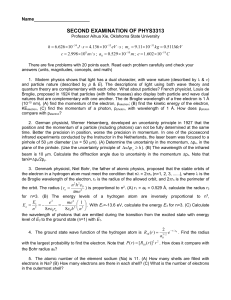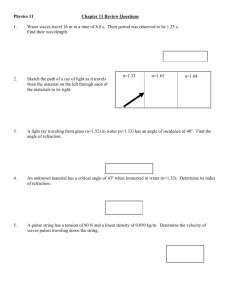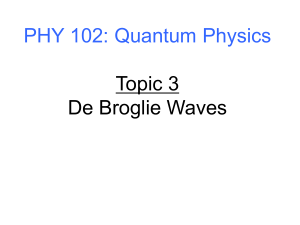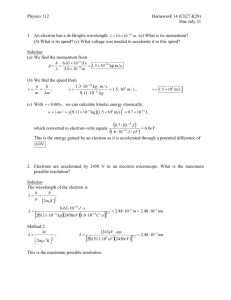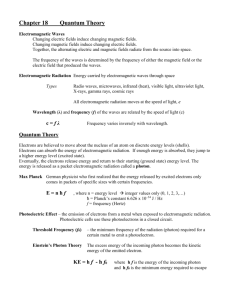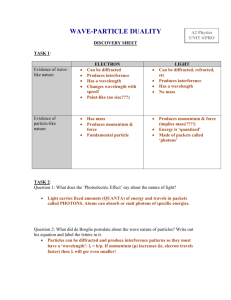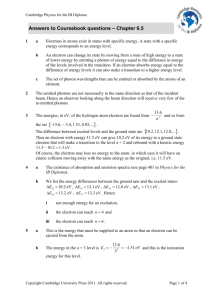TAP 507-2: Electron standing waves
advertisement
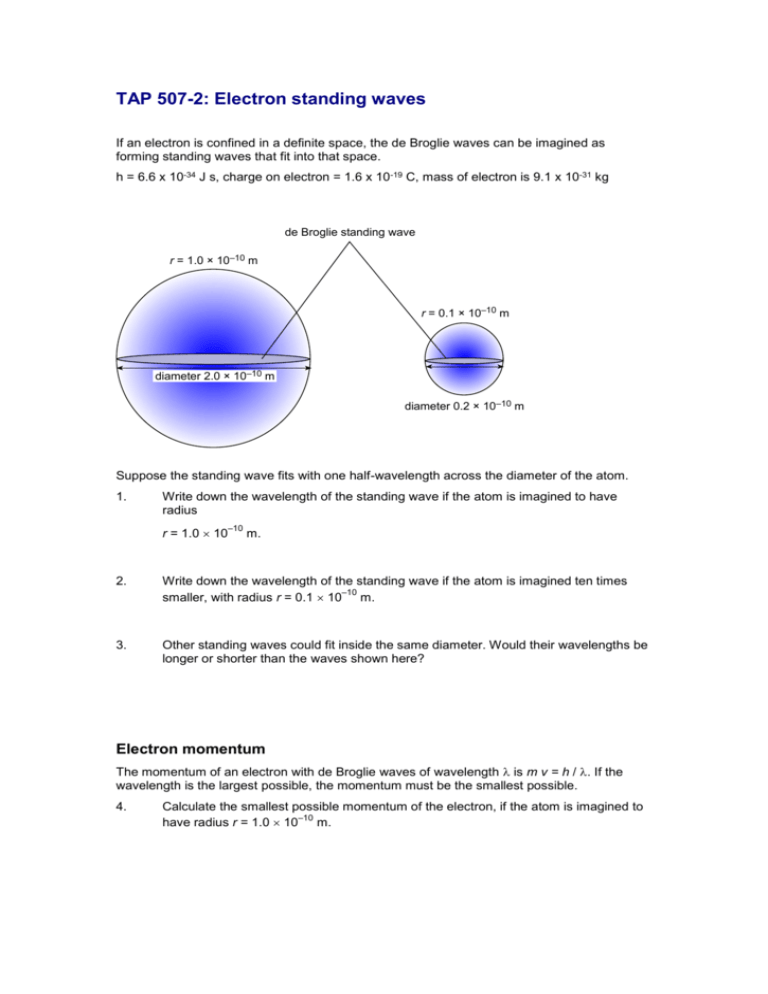
TAP 507-2: Electron standing waves If an electron is confined in a definite space, the de Broglie waves can be imagined as forming standing waves that fit into that space. h = 6.6 x 10-34 J s, charge on electron = 1.6 x 10-19 C, mass of electron is 9.1 x 10-31 kg de Broglie standing wave r = 1.0 × 10–10 m r = 0.1 × 10–10 m diameter 2.0 × 10–10 m diameter 0.2 × 10–10 m Suppose the standing wave fits with one half-wavelength across the diameter of the atom. 1. Write down the wavelength of the standing wave if the atom is imagined to have radius r = 1.0 10 –10 m. 2. Write down the wavelength of the standing wave if the atom is imagined ten times –10 smaller, with radius r = 0.1 10 m. 3. Other standing waves could fit inside the same diameter. Would their wavelengths be longer or shorter than the waves shown here? Electron momentum The momentum of an electron with de Broglie waves of wavelength is m v = h / . If the wavelength is the largest possible, the momentum must be the smallest possible. 4. Calculate the smallest possible momentum of the electron, if the atom is imagined to –10 have radius r = 1.0 10 m. 5. Calculate, or write down directly from the answer to question 4, the smallest possible –10 momentum of the electron if the atom is imagined to have radius r = 0.1 10 m. 6. Write a few lines explaining why an electron confined in a smaller space has a larger minimum momentum. Answers and worked solutions 1. The waves have half a wavelength fitting into the diameter, so = 4.0 10 2. The radius is 10 times smaller so the wavelength is 10 times shorter: = 0.4 10 3. –10 –10 m. m. More half-wavelength loops have to be fitted into the same length, so the wavelengths will all be smaller. 4. mv h 6.6 10 34 J s 4.0 10 10 m 1.65 10 24 kg m s 1 . 5. As for question 4 with the wavelength 10 times smaller, so the momentum is 10 times –24 –1 larger: mv = 16.5 10 kg m s . 6. The smaller the space the shorter the wavelength. But the shorter the wavelength the greater the momentum, since mv = h / . External reference This activity is taken from Advancing Physics chapter 17, and uses part of question 160s.
